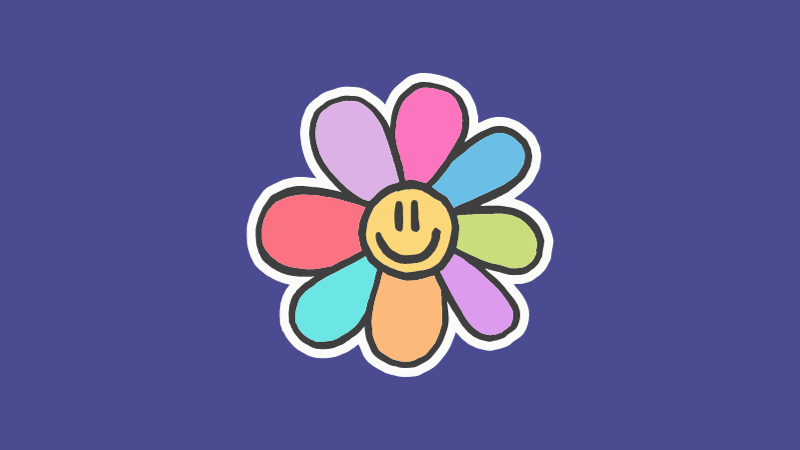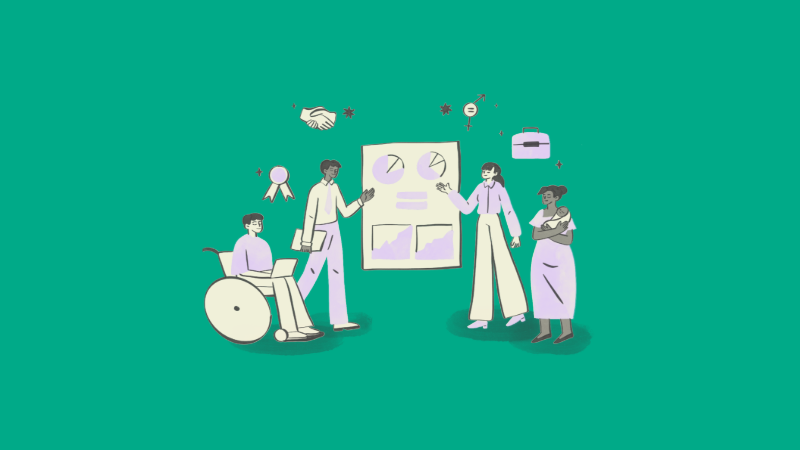Table of Contents
Affiliate link notice: As an affiliate of BetterHelp and other third-party vendors, We will receive compensation if you make a purchase using the links provided on this page. For more information, visit our disclosure page.
Last Updated on December 12, 2021 by Randy Withers, LCMHC
It might sound like a ridiculously simple thing to say, but it’s important to remember to breathe.
Of course, you don’t actually have to remind yourself to breathe – one of the most amazing things about the human body is the fact that your “vital life support system” operates on an entirely subconscious level.
Your heart beats, your stomach digests food, and your lungs inhale and exhale without you even having to think about it.
With that said, you might be surprised at what happens when you do actually start to consciously think about your breathing patterns.

How (and Why) Breathing Exercises Help
Focusing on your breathing is one of the simplest ways to calm yourself down, gather your thoughts, and ground yourself in your emotions. There are not many better ways to live in the “here and now.”
If this is beginning to sound like new age mumbo jumbo, you might want to check out the scientific data that supports the benefits of breathing exercises. Many studies have documented the incredible effects of breathing exercises, especially in regard to improving mental health.
If the scientific data still isn’t convincing enough, all you need to do is look back to humanity’s long history of utilizing these breathing exercises throughout ancient times. A huge part of yoga is breathing correctly – and yoga predates our knowledge of the earliest human civilizations.
Meditation is another eastern practice that relies heavily on correct breathing techniques, and almost every clinical psychologist will agree that this is one of the most effective things you can do to improve your mental health.
Today, we continue to learn even more about the effectiveness of breathing exercises.
There are all kinds of different methods you can try right now. You may even experience significant mental health benefits as a result. Some of these techniques are complex, but others are straightforward. It’s up to you to decide which works best for you.
Sometimes, simply taking deep breaths can radically reduce stress and anxiety – whether you’re a hard-working college student, a mother of a large family, or a healthcare professional on the front lines.
Ancient civilizations believed that the act of inhaling and exhaling symbolized the dualistic nature of our reality – the yin and the yang, the “prana,” the negative and the positive.
When we approach breathing exercises as a genuine way to improve mental health, it becomes more than just a physical exercise. These techniques can link our physical bodies and our mental thought processes, achieving a state of “oneness” as we unite the yin and the yang together.
Focusing solely on our breath allows us to live in the here and now.
In that moment, all that matters is your existence and your breathing – and this can be a liberating experience.
Keep this simplicity in mind as we go through some breathing exercises that you can try for yourself, and remember that you don’t need to master complex techniques in order to benefit.
Merely focusing on your breathing is often enough to help you reach a state of relaxation and escape from stress and anxiety.
Start Simple: Basic Breathing Techniques
If you’ve never tried breathing exercises before, it might be a good idea to start with something simple.
The foundation of all proper breathing techniques is the inhale and the exhale. Generally speaking, you should be inhaling through your nose and exhaling through your mouth.
Spend a few minutes per day focusing on this simple act. As you focus on breathing and forget about everything else in your life, you will naturally begin to relax.
You can reach a deeper state of relaxation by lengthening your breaths, inhaling deeply through your nostrils, and completely exhaling that air through your mouth in a slow, calm manner.
Taking deep breaths is one of the simplest ways to calm down and push more valuable oxygen to your brain.
1. Belly Breathing
Once you’ve mastered the art of deep breathing, it’s time to move on to belly breathing.
With this technique, your goal is to move air in and out of your lungs using your diaphragm instead of your chest. Start off by sitting or lying down in a natural position. Place one hand on your chest and your other hand on your belly.
As you inhale through your nose, try to focus on letting your stomach rise instead of your chest. When you exhale, purse your lips and focus on using your stomach muscles to force the air out of your mouth.
If you practice daily, this healthy type of breathing will become automatic.
2. Equal Breathing
This simple breathing technique dates back to the earliest days of ancient pranayama yoga.
The concept is straightforward: You inhale for the same amount of time as you exhale. Although equal breathing is easy, it does require some degree of focus and concentration, as you’ll need to count how long each breath takes.
This approach trains you to be mindful of the fullness of your lungs and mentally focus on your breathing. When you concentrate on your breathing, stressful thoughts and residual anxiety can melt away.
First, get comfortable. Breathe normally for several beats, and then get ready to count on your next breath.
As you inhale through your nose, slowly count for four beats. When you reach four, exhale and count for beats once again. As you repeat this process, you might discover that a different period of time is more comfortable for you.
Do whatever feels right for you, whether you want to inhale/exhale for three, four, or five seconds. The main thing is to make sure you’re spending the same amount of time inhaling and exhaling.
When you get comfortable with equal breathing, you can move on to the next level, which is resonant breathing.
Although this is very similar to equal breathing, it requires you to inhale and exhale for six-second counts. You should also engage in resonant breathing while lying down, and be careful not to fill your lungs too much.
It’s best to get comfortable with equal breathing before moving on to resonant breathing.
3. Lion’s Breath
Lion’s breath is an ancient yogic breathing technique that involves breathing in a more forceful manner.
The correct way to do this is to get into a kneeling position with your ankles crossed behind you and your feet facing down towards the ground. Alternatively, you can sit cross-legged. Put your hands on your knees and inhale deeply through your nose. Next, exhale through your mouth in a strong manner and vocalize the breath with a forceful “Ha!”
While exhaling, most yogic practitioners stretch their mouth open as far as possible, sticking their tongue out and focusing on their forehead.
Do whatever feels comfortable – but try to repeat these forceful breaths at least six times while changing the way your ankles are crossed after three breaths.
4. Natural Breathing
Sometimes, breathing techniques can become stressful simply because we’re worrying too much about doing things correctly. If this is proving to be an obstacle for you, natural breathing might be an excellent solution.
The great thing about natural breathing is that you don’t actually have to do anything.
The only thing involved in this technique is simply being aware of your breathing. Listen. Feel your breaths, and observe how you breathe in a natural way. When you act as an observer of your own body, you will naturally become an observer for your own mind.
This process is one of the key foundations of meditation, one of the most effective ways to address mental health issues. With natural breathing, you’re essentially adopting a “third-person view” of your own being.
As you become aware of your breathing on a deep level, the way you inhale and exhale will naturally start to change as you become more relaxed. Simply allow these changes to happen while maintaining the role of an observer.
5. Intermittent Breath Retention
If you’re ready to try a breathing technique that is a little bit more complex, intermittent breath retention may be a solid choice.
As the name suggests, this technique involves holding your breath in between inhales and exhales. Although this might seem like a stressful process, it can actually create an incredibly strong sensation of relaxation.
You can start with intermittent breath retention by simply holding your breath for a shorter period of time compared to both your inhale and your exhale. There is scientific data that suggests this practice can help deal with metabolism issues.
The most well-known intermittent breath retention technique is called the “relaxing breath.”
Also known as the “4-7-8” technique, this involves inhaling for 4 seconds, holding your breath for 7 seconds, and then exhaling for 8 seconds.
This method is specifically intended to address anxiety, and some people claim that it helps them get to sleep in under a minute. Most experts recommend that you engage in this breathing pattern for four repetitions before stopping.
If holding your breath for seven seconds is too difficult, you can shorten the technique. The shortened approach involves an inhale of 2 seconds, breath retention of 3.5 seconds, and then an exhale of 4 seconds.
The key is to maintain the same ratio as the 4-7-8 technique.
6. Alternate Nostril Breathing
With alternate nostril breathing, we’re venturing into territory that doesn’t quite classify as “simple.” That being said, it’s still totally doable – and it could be an excellent final step for someone who has mastered all of the techniques listed above.
Also known as “Nadi Shodhana,” alternate nostril breathing is an ancient practice that has been used by yogis to achieve balance and restore the nervous system.
To engage in alternate nostril breathing, start by getting into a comfortable position.
Next, exhale completely.
Before you inhale, bring up your hand and block your right nostril with your thumb. This will force you to inhale through only your left nostril.
When you’re ready to exhale, use your finger to block your left nostril. This will force you to exhale through only your right nostril. After exhaling, keep your right nostril open and inhale.
Next, block your right nostril and exhale through your left nostril. This is one complete cycle. You can continue this process for five minutes.
Traditionally, yogi practitioners try to finish this breathing technique with an exhale through the left nostril.
The Science Behind Your Breath
While the science behind breathing is quite complex, the main thing you need to know is that breathing involves an exchange between oxygen and carbon dioxide. The latter is “waste” that needs to escape our bodies and our cells.
Without proper breathing patterns, the balance between oxygen and carbon dioxide becomes unhealthy, causing mental and physical problems.
While we’ve listed a number of different breathing techniques so far, there are two different types of breathing that are recognized by science:
- Diaphragmatic breathing: This is when you breathe from your abdominal cavity. Think long, deep inhales and exhales.
- Thoracic breathing: This type of breathing occurs mainly in your chest. Think fast, shallow, gasping breaths that you might take when you’re anxious or stressed.
It might seem obvious, but breathing in your chest is unhealthy compared to diaphragmatic breathing. Because of improper carbon dioxide and oxygen balances, thoracic breathing can cause increased heart rate, muscle tension, and other physical issues.
If you’re not sure whether you’re breathing through your chest or your abdominal cavity, you can check by placing your hand on each region. If you feel your hand rising and falling, you’re breathing through that region.
All of the breathing techniques listed above can have a range of benefits. Proper breathing techniques can massively increase the amount of oxygen in your body.
Studies have shown that with controlled breathing, you can increase oxygen consumption by more than 50%. All across our bodies, our cells thrive on oxygen.
This is especially true in the brain, where lack of oxygen can contribute to all kinds of mental health problems. Proper breathing techniques can also lower blood pressure, and this can contribute to lower levels of stress.
There are many different methods for addressing mental health issues, and getting professional help from qualified professionals is always a smart move.
That being said, something as simple as a breathing exercise can have surprising benefits, and it may be an excellent solution for someone who is dealing with high levels of stress and anxiety.
References:
- How Breath-Control Can Change Your Life: A Systematic Review on Psycho-Physiological Correlates of Slow Breathing
- The Effectiveness of Daily Mindful Breathing Practices on Test Anxiety of Students
- Scientists Announce Breathtaking Research on Why Breathing Exercises Reduce Stress
- Proper Breathing Brings Better Health
- This Ancient Breathing Technique Can Help Relieve Anxiety
- Oxygen Consumption Changes With Yoga Practices: A Systematic Review









